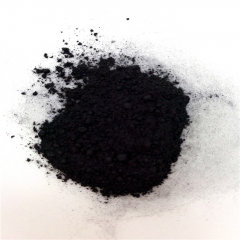What color is molybdenum disilicide
Its appearance is gray metallic, which is derived from its tetragonal α-type crystal structure. There are also hexagonal but unstable β-modified crystals. Structure, insoluble in most acids, but soluble in nitric acid and hydrofluoric acid.

Application of molybdenum disilicide
Molybdenum disilicide is used in high-temperature anti-oxidation coatings, electric heating elements, integrated electrode membranes, structural materials, reinforcing agents for composite materials, wear-resistant materials and connecting materials for structural ceramics. It is distributed in the following industries:
1. Energy and chemical industry: electric heating elements, high-temperature heat exchangers of atomic reactor equipment, gas burners, high-temperature thermocouples and their protection tubes, smelting vessels and crucibles (used for smelting sodium, lithium, lead, bismuth, tin and Other metals).
2. Microelectronics industry: MoSi2 and other refractory metal silicides Ti5Si3, WSi2, TaSi2, etc. are important candidates for large-scale integrated circuit gates and interconnect films.
3. Aerospace industry: As a high-temperature anti-oxidation coating material, it has been extensively and deeply researched and applied. Especially as a material for turbine engine parts, such as blades, impellers, combustion chambers, nozzles and sealing devices.
4. Automobile industry: turbocharger rotor, valve body, spark plug and automobile engine parts
5. Molybdenum disilicide can also be used for heating elements of ceramic heaters. Even at a high temperature of 1700°C, it will form a protective film on the surface to maintain good oxidation resistance. Molybdenum silicide is used as a structural material for aerospace and automotive gas turbines, gas combustion nozzles and nozzle high-temperature parts. High temperature filter
What are the factors that affect the service life of molybdenum disilicide heating elements?
The molybdenum disilicide heating element is a resistance heating element based on molybdenum silicide, heated to a high temperature in an oxidizing atmosphere, and a dense glass oxide film can be formed on the surface to make it no longer oxidized. At present, it is widely used in industries such as steel metallurgy, glass, ceramics and laboratory furnaces.
When the electric heating element is used continuously in the air, its resistance does not change at all. In theory, it can be used continuously for many years. But in fact, there are many other factors that will shorten its service life. Even under ideal conditions, it is more difficult to predict the service life of components. The common factors affecting the service life are as follows:
1. Fired products. For example, the service life of firing special glass is different from that used in the reflective material industry and the magnetic material industry. The magnetic material industry has the longest available time and special glass has the least.
2. Product quality. The production of raw materials and manufacturing processes determine the quality of the product.
3. The quality of the stove. A good quality furnace can increase the service life of the components.
4. Surface problems. Long-term use at a temperature of 1800°C will cause problems such as lumps and bubbling on the surface, destroying the protective effect of the SiO2 oxide film on the surface of the silicon molybdenum rod, thereby reducing the service life.
5. Dimensional tolerance. The accuracy of the hot end size will directly affect the precise temperature control of the electric furnace. When there is a tolerance in the diameter, the cross-sectional area and impedance value will also change, and the heat generation of the electric heating component will also change accordingly. This also means that the uniformity of heat in the electric furnace or the service life of the electric heating components will be greatly affected.
6. Furnace operator. Too high power or overheating will damage the heating element products.
7. Product contamination. The product or atmosphere reacts with the protective glaze, causing the component to deteriorate.
8. Insulation problems. The insulating layer is too tight, the insulating layer is displaced and damaged, or the insulator is in contact and overheated.
9. Mechanical force. Thermal breaks will become soft and may deform, depending on the orientation of their placement in the furnace.
Storage of Molybdenum Disilicide
A humid environment can easily cause the molybdenum disilicide powder to agglomerate, so the molybdenum disilicide powder should be stored in a dry environment and vacuum-packed.
The price of molybdenum disilicide
Tanki New Materials Co.Ltd has rich experiences in the properties, applications, and cost-effective manufacturing of advanced and engineered materials. The company has successfully developed a series of powder materials (including oxides, carbides, nitrides, single metal, etc.), high-purity targets, functional ceramics, and structural devices. OEM service is available.Please send email to sales@ozbo.com for inquiry.


